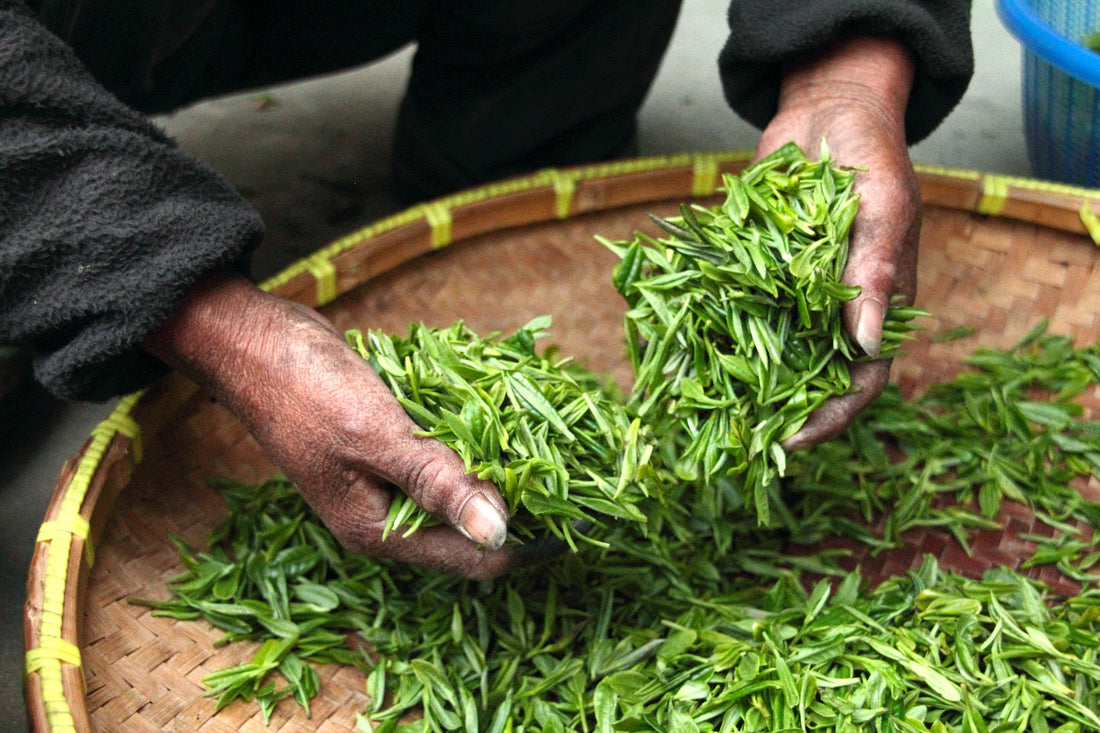Tea is simply incredible. Maybe you drink it to get your caffeine kick, or to find comfort when feeling sad or sick. This simple beverage is not as simple as we may think. It has a history of thousands of years, it has wild healing properties, and it is delicious. Here are some fun facts about tea that will blow your mind.
All tea. Like ALL tea comes from one type of plant: camellia sinesis.
White tea, green tea, red tea, black tea, yellow tea, pu’er, oolongs — they all come from this plant. The differences between these teas comes from how the tea leaf is processed and where the tea plant, camellia sinesis, is grown.
Sad story. Most tea bags have the poorest quality tea of in them.
In a tea bag the tea leaves are powdery, at best crumb like. Unless it is matcha, the best quality tea is whole leaf. For example, in excellent tea you can see the veins and definition of the tea leaf after you brew your tea. It is beautiful like a wet leaf on a rainy spring day. So tea bags usually consist of crumbs and crushed bits from the bottom of the barrel. This is not where optimal taste and health benefits live.

The journey of tea began as a healing tool, as medicine.
The story of tea is 4500 years old. It was said to be discovered by a Chinese Emperor in 2732 BC. For 4000 years tea was a remedy used to heal and prevent sickness. It was used to keep the body strong by offering nutrition. It is and was a plant medicine. In the colonial adoption of tea: Tea was still being prescribed as medicine in Britain and its colonies like the United States in the 1600s and 1700s. However the sugar industry (and capitalism) helped us forget that tea is a healer, when the British added milk and sugar to tea to grow adjacent industries. In 500 years we seemed to have forgotten what was known for 4000 years — tea is healing.
Tea vs. Coffee, why who won where.
Amongst many exotic items like spice and silk, tea and coffee were brought (or taken/extracted) from Latin America and Southern Asia to the western world. Interestingly tea and coffee came around Western Europe and its (former) colonies around the same time. They were in competition with one another. In Britain tea won, perhaps because it was so easy to make — no tools required just add hot water. In the United States coffee won, in protest to being a British colony Americans threw a shipment of tea overboard (remember the Boston Tea Party in 1773). As lovely as tea is, its history is laced with politics.

High quality, whole leaf tea brews in seconds, not minutes, and can steep several times.
This may sound unbelievable but when you have the right amount of boiling hot water (100°C) and high quality tea, it takes 10-15 seconds to brew a delicious cup of tea (with exception of white and green tea that use lower water temperatures and require additional seconds to steep). A good quality pu’er or red/black tea will turn earthy brown in 10-15 seconds. It is incredible and you feel the power of the leaves instantly with your eyes and nose, before it even reaches your taste buds. Even more amazing is that you can steep those tea leaves 6+ times. Each cup steeping a little bit longer (like 20 seconds more). Each cup tasting so different than the last as the tea leaves blossom.
Green tea is beautifully floral. Sadly the western world knows it as bitter and sometimes gross.
Another sad story. The green tea that we consume in the western world is usually not good quality and probably expired! The processing of green tea is minimal, meaning that the tea leaves are still on the fresh side aka green leaves. So the shelf life of green tea is 1 year or less. Whereas teas that undergo a fermentation process, like pu’er, red, and black teas, get better with age. When drinking good quality, fresh green tea it has a wonderful floral, fresh grass aroma that is subtle and light. Its bitterness can be gentle, pending on how long you steep the tea. So that Starbucks Tazo green tea bag with a 3 year shelf life is both misleading and gross.
Tea offers way more than just caffeine.
Good quality tea can be nutrient and mineral dense. When a tea leaf is processed all the nutrients of the plant are intact and the rolling, steaming, fermenting that goes into making a fresh tea leaf into tea allow the human body to access the nutritional content of the tea plant. For example, tea contains polyphenols, which is an antioxidant that repairs cells and may help our bodies fend off diabetes, cancers, cardiovascular disease. Different teas also contain different minerals and vitamins too, pending on where they were grown. Tea is way more than a caffeine kick, it has a lot of good stuff that our body needs to heal and repair.
When you drink your next cup of tea maybe you will feel a greater gratitude and appreciation for this luscious earth liquid. This little tea leaf has come a long way just for you!

